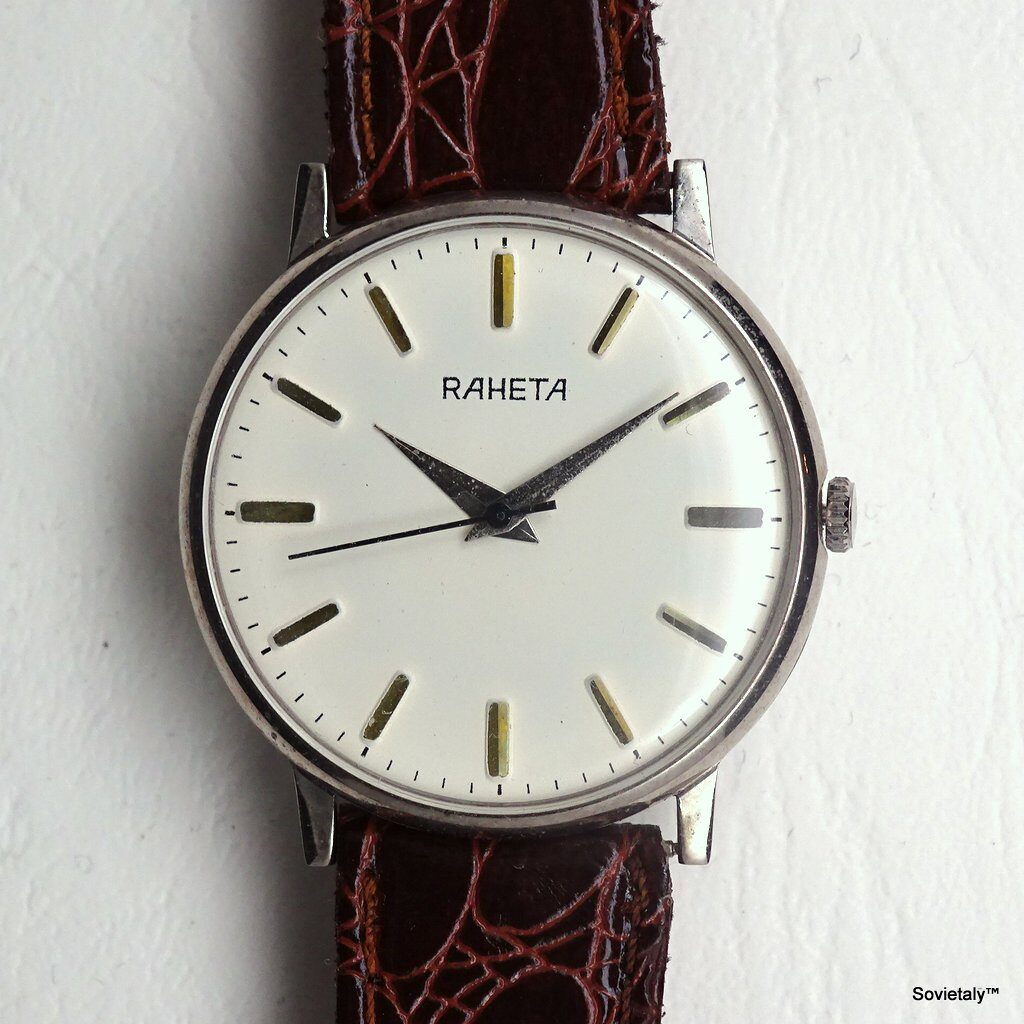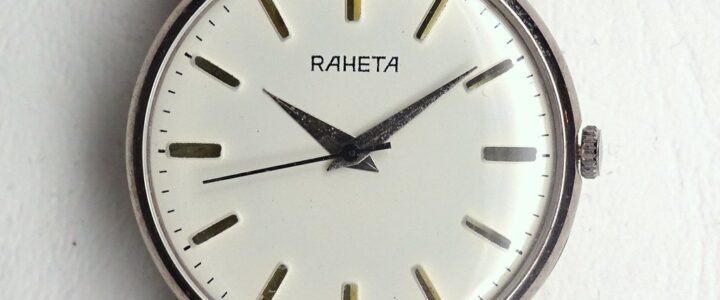Origins of Raheta Watch
The Raheta watch brand emerged during the early 1990s, a period of significant economic and industrial transition in Russia following the dissolution of the Soviet Union. Unlike the well-documented Raketa brand, Raheta watches were produced under conditions that required ingenuity and resourcefulness.

Distinction from Raketa
It is crucial to note that Raheta is not a misspelling of Raketa. Raheta watches were likely created by entrepreneurs who saw an opportunity to leverage the existing fame of Raketa while introducing a slightly altered brand to navigate the economic uncertainties of the time.
Production and Components
Raheta watches were primarily assembled using movements from the Zaria (Sarja) factory, specifically the Z2009B caliber with 21 jewels. These movements were known for their reliability and were often used in small ladies’ watches. The components used in Raheta watches were sourced from leftover stocks and various parts available during the post-Soviet industrial upheaval.
Market Strategy
Raheta watches were marketed towards tourists and collectors looking for unique timepieces from Russia. The brand played on the familiarity and reputation of Raketa while offering products at a more accessible price point, making them attractive souvenirs and collectibles.
Theories and Oral Histories
According to discussions on forums like Orologiko, the production of Raheta watches was driven by the need to monetize available resources and meet market demands during a period of economic hardship. The use of similar logos and brand names helped create an association with the trusted Raketa brand, although Raheta watches were distinct in their assembly and market positioning.
Conclusion
Raheta watches represent a fascinating period in Russian watchmaking history. They are a testament to the resilience and creativity of the industry during challenging times. For collectors and enthusiasts, Raheta watches offer a unique glimpse into the post-Soviet era and the adaptability of Russian horologists.



